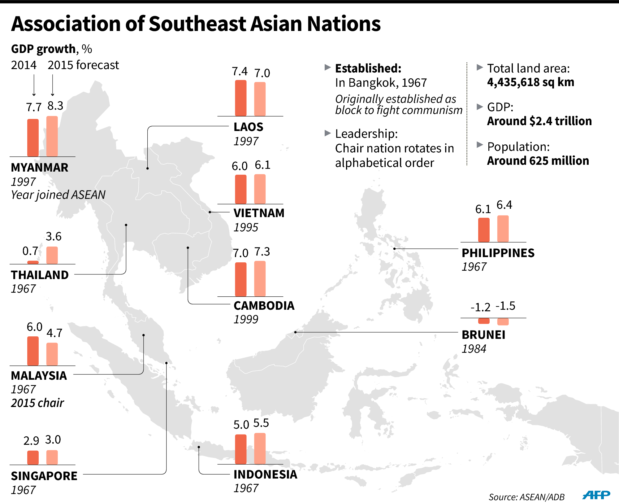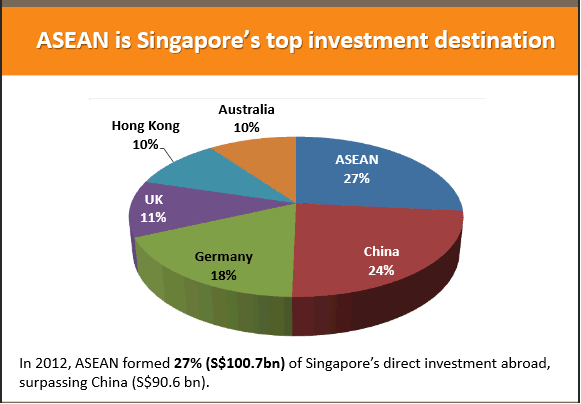As South-east Asia gets ready for the official introduction of the Asean Economic Community (AEC) on Dec 31, 2015, The Straits Times takes a close-up look at this region which is home to more than 600 million people.
Singapore is poised to play a greater role as an exporter of services and skills once the AEC is up and running, a global management consultancy expert says. "Already, Singapore is home to a lot of headquarters for companies in the region," McKinsey & Company Asia chairman Kevin Sneader told The Straits Times in a May interview.
On paper, AEC is expected to facilitate a freer flow of goods, services, skilled labour, jobs and investment capital across Asean. Analysts agree that there is much to gain from full economic integration, but warn that factors such as protectionism, the lack of Asean-wide standards in many sectors and regulatory hurdles will be major stumbling blocks.

Here are 7 numbers which explain why AEC matters:
1 single market and production base
With a combined gross domestic product (GDP) of US$2.5 trillion in 2014, Asean now has the third-largest GDP in Asia, after China and Japan. Taken together, Asean's 10 members already comprise the world's seventh-largest economy. If growth trends continue, Asean could be the world's fourth largest single market by 2030, after the EU, US, and China. Overall GDP is forecast to hit US$10 trillion by 2030 - a five-fold expansion from the 2012 figure of US$2.2 trillion.
5 per cent growth
Barring shocks, annual growth for the whole of Asean is projected to average 5.4 per cent from 2014 to 2018. For comparison, projected growth for the European Union is around 2 per cent and the United States at 3 per cent.
8 groups of professionals
Eight groups of professions - engineers, tourist professionals, dentists, architects, surveyors, accountants, nurses and doctors - will enjoy easier access to regional talent. The International Labour Organization (ILO) says demand for high-skilled workers will increase but warns that inequality could worsen. In a survey of 240 professionals from enterprises and business associations spanning all 10 Asean countries, the ILO found that nearly half (47 per cent) feel that, after integration, their company will have to offer higher wages to retain skilled workers.

10 member countries
The 10 members are Singapore, Malaysia, Indonesia, Thailand, Philippines, Brunei, Vietnam, Cambodia, Laos and Myanmar. The chair nation rotates in alphabetical order: Malaysia is the Asean chair this year while landlocked Laos will assume the leadership next year.
27 per cent
This percentage of Singapore's direct investment abroad went to Asean in 2012, making the region the city-state's top investment destination. Singapore is the No. 1 investor in Myanmar, the 3rd largest investor in Vietnam and Thailand's second-largest investor. Foreign revenue generated by the top 1,000 companies in Singapore by revenue has increased steadily from S$149.9 billion in 2011 to S$223.9 billion in 2014.

28.8 years old
Half of Asean's population was below 28.8 years of age in 2014, compared to 40.8 in China and 42.1 in the European Union. Asean's youthful population will yield demographic dividend in the form of abundant labour pool and comparatively low wages.
625 million people

The region has the third-largest labour force in the world, behind China and India. Asean's population is expected to reach 670 million by 2020, up from 625 million in 2014. Millions of people in the fast emerging markets of Vietnam, the Philippines and Indonesia are joining the ranks of the consumer middle-class. The number of middle-class households will more than double to 80 million in three years' time.

